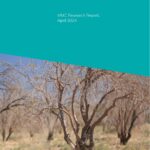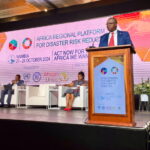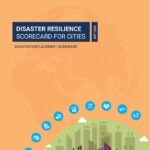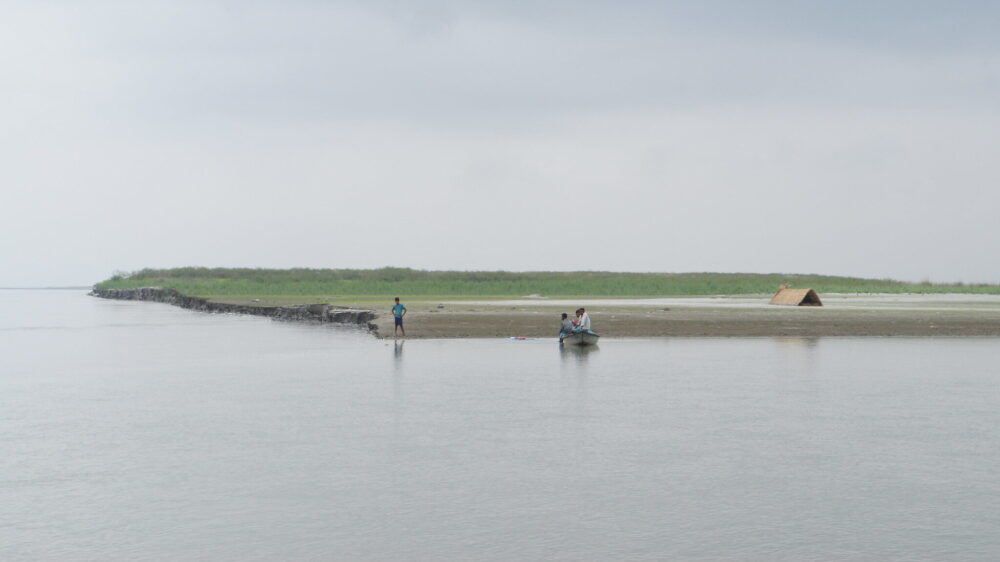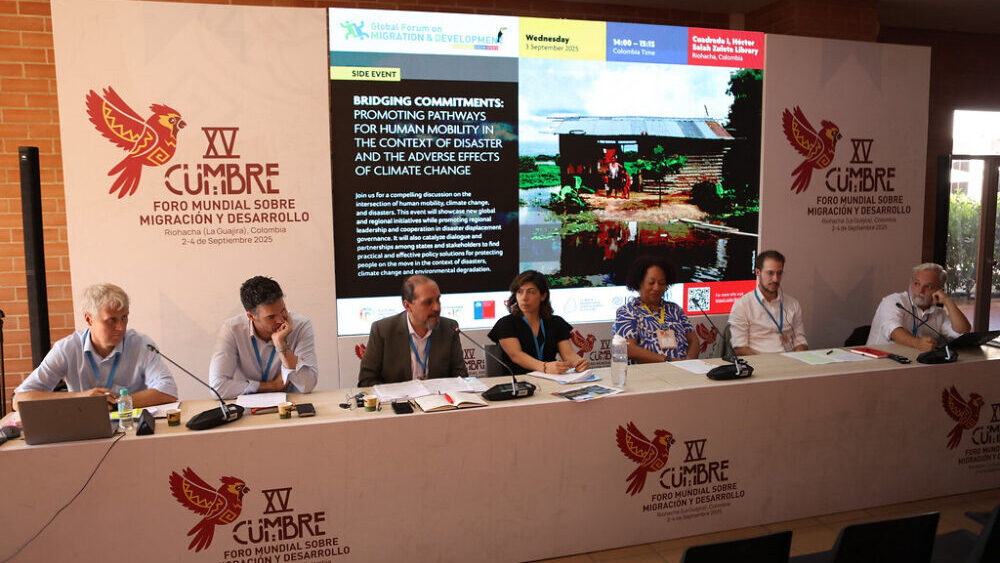Leveraging Development Finance for Greater Action on Climate and Disaster Displacement
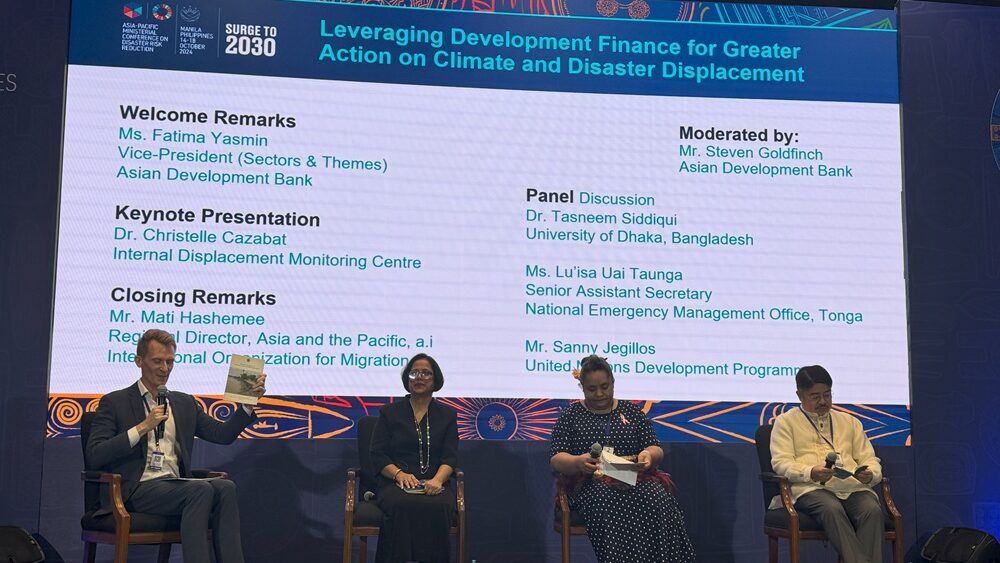
Manila, Philippines, 15 October 2024 – At the occasion of the Second Asia Pacific Ministerial Conference on Disaster Risk Reduction (APMCDRR), the Asian Development Bank (ADB), Internal Displacement Monitoring Centre (IDMC), and the Disaster Displacement Working Group organized a partner event entitled “Leveraging Development Finance for Greater Action on Climate and Disaster Displacement” on 15 October 2024.
Ms. Fatima Yasmin, Vice-President for Sectors and Themes of ADB gave welcome remarks. The keynote address was presented by Dr. Christelle Cazabat from the Internal Displacement Monitoring Centre. Mr. Steven Goldfinch, Senior Disaster Risk Management Specialist at ADB moderated the event. The panelists included Dr. Tasneem Siddiqui from University of Dhaka, Bangladesh, Mr. Lu’isa Uai Taunga, Senior Assistant Secretary at National Emergency Management Office in Tonga, and Mr. Sanny Jegillos from the United Nations Development Programme (UNDP). The closing remarks were provided by Mr. Mati Hashemee, Regional Director Asia and the Pacific (ad interim) of the International Organization for Migration.
Ms. Fatima Yasmin in her opening remarks stressed that multilateral development banks have a role to play to support the development of displacement inclusive policies. She shared that ADB is in the process of developing a guidance note for their staff to better include displacement in project design.
Dr. Cazabat of IDMC presented that according to the IDMC’s data, the Asia and Pacific region is the world’s most affected by disaster displacement.
“Most of the disaster displacement recorded globally has taken place in Asia and the Pacific, with 177 million internal displacements reported during 2014−2023. This represents 74% of the global total. Within the same period, ADB’s developing member economies accounted for 95% of the regional total,” she said in her presentation.
Ms. Cazabat emphasized that addressing displacement requires a shift from a humanitarian to a development lens and MDBs play a crucial role in that. She sees a role for multilateral development banks in particular regarding providing support to low-income countries.
Trying to estimate the economic cost of disaster displacement, IDMC estimates a cost of 275 USD per day if every one of the over 9 million people at risk of displacement across the region were displaced and lost their income only for one day.
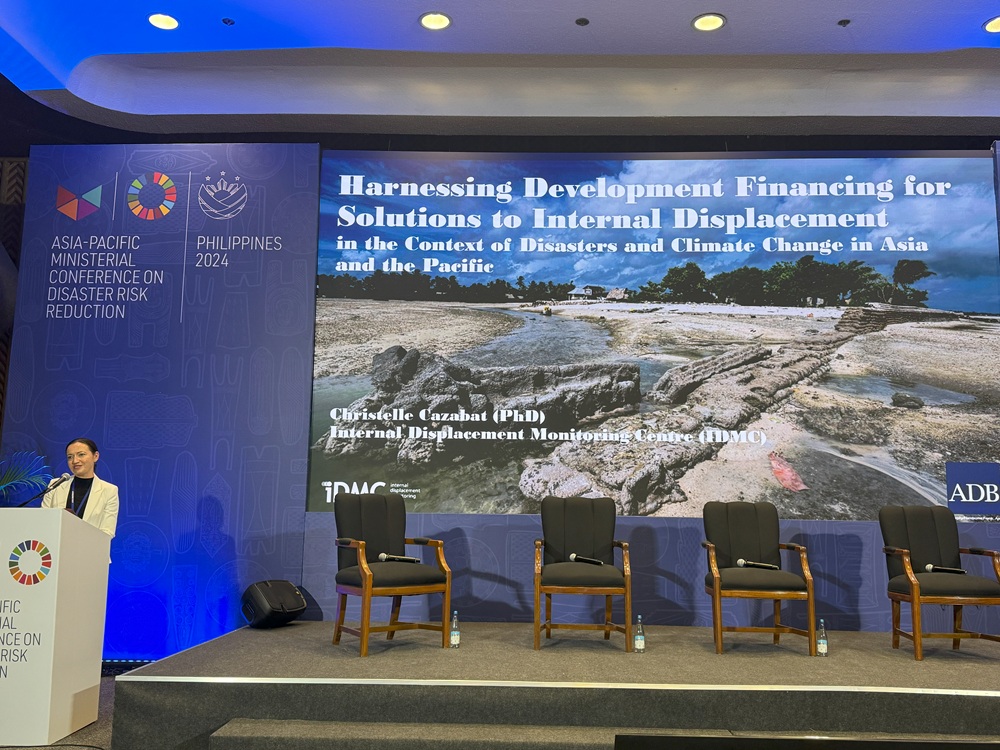
She concluded that MDBs can play a role in reducing the risk of displacement, responding to the immediate needs of the displaced and their host communities, and by investing in long term planning in both origin and destination sites. She further added that their interventions need to be anchored in the national development architecture. Better data on the gender, age, disability status, livelihoods and further information on the displacement were urgently needed to inform action.
As the first panelist, Dr. Tasneem Siddiqui was asked to share the experience of Bangladesh in developing its IDP strategy. She highlighted its collaborative development across a large number of governmental and non-governmental stakeholders. Nine ministries in Bangladesh formed a taskforce and formulated the strategy, and a total of 27 ministries are now actively involved in its implementation. The strategy has gained international attention, with Climate Vulnerable Forum countries requesting it as a template to design their own frameworks.
Dr. Siddiqui called for MDBs to support integrated solutions that could combine both DRR and Climate Change Action interventions.
‘The PAMAD project has been instrumental in helping Bangladesh in advancing collection of data on IDPs and increase engagement at the grassroots level’ – Dr. Tasneem Siddiqui
Dr. Tasneem Siddiqui highlighted key challenges in implementing the strategy, including siloed efforts and competition for limited resources. She suggested that an overarching action plan with clear priorities and funding allocations for each actor could reduce competition for climate and development funds. Emphasizing a rights-based approach, she noted that supporting disaster-displaced persons is a government responsibility, not an act of charity.

Ms. Lu’isa Kai Taunga from the National Emergency Management Office of Tonga shared lessons from the Tsunami recovery that was ongoing since January 2022. Development finance had played a key role in providing emergency assistance. She called for development finance to be more flexible and responsive to bridge the actions needed after the immediate emergency response. She also spoke about the importance of avoiding policy siloes and promoting approaches that bring together climate, DRR and development planning.
Mr. Sanny Jegillos from UNDP asked for an increase in financing, an increase in inclusion of displaced persons and an increase in investment in local action. Given the adverse effects of climate change, he expects a higher humanitarian cost of responding to disaster displacement. He noted that the costs of displacement cannot be measured solely by response expenses but should also include the value of lost opportunities.

He emphasized the link between climate adaptation funding, DRR funding, and humanitarian funding, noting that effective disaster risk reduction and targeted climate adaptation could reduce the need for humanitarian responses. He highlighted the importance of accessible financing for those in need and stressed that risk assessments should be recalibrated to focus on people. The focus on affected individuals was essential, as they are key players in adapting to climate change. Recognizing that climate change impacts people differently, he insisted that funding must reach communities directly.
The side event concluded with remarks from Mr. Mati Hashemee of IOM, who emphasized the importance of viewing disaster displacement as a development issue rather than solely a humanitarian one.
‘I encourage everyone to take the insights shared today back to your organizations and look for ways to scale up collective action. Leveraging development finance effectively isn’t just about money, it’s about ensuring that we create a future where displacement is averted or minimized. And when displacement does occur, we must ensure that affected communities are treated with dignity and can access sustainable pathways to recovery,” he said.
He reiterated the critical role of multilateral development banks and noted that their funding remains underutilized. He urged banks to invest more in the existing tools and mechanisms available. Mr. Mati concluded by calling for strengthened partnerships among MDBs, the UN, civil society, and the private sector to effectively tackle these challenges.

